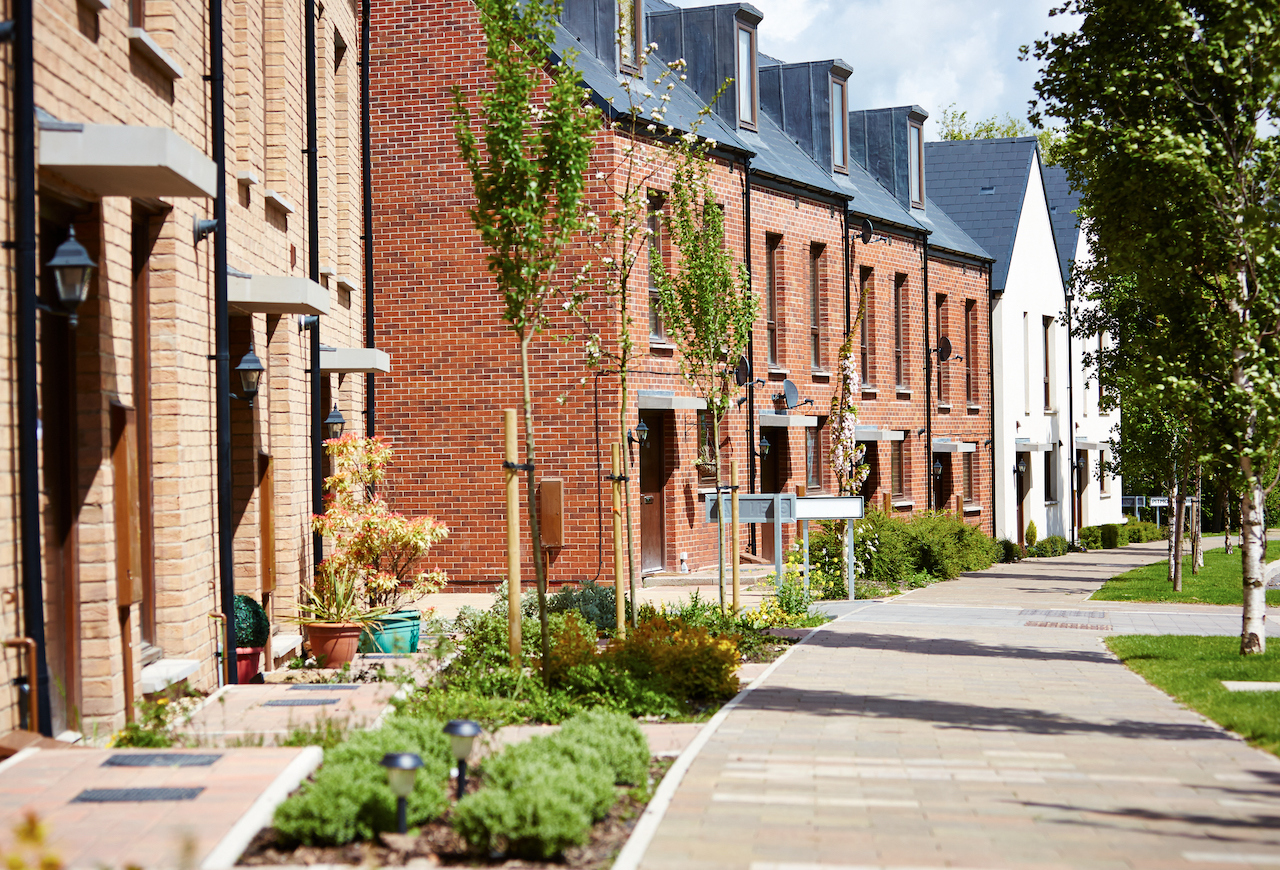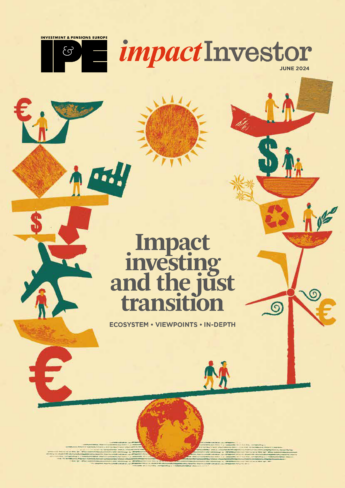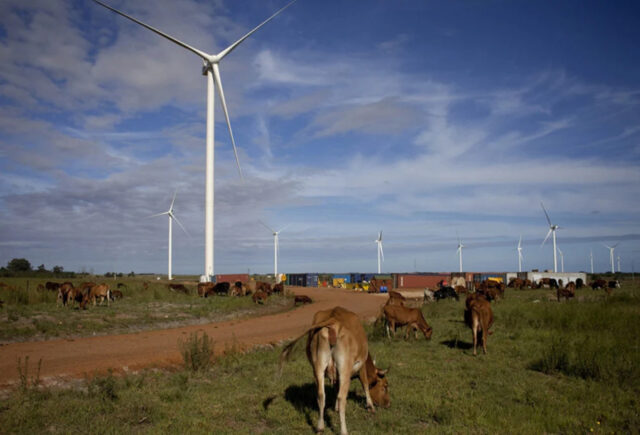From our ‘Impact Investing and the Just Transition’ report: There is a dire need for more affordable housing across Europe. Can investors help address this demand, while also navigating changing regulations and generating strong returns?

A lot of the rhetoric around the just transition has focused on the energy sector and the labour market, and shifting to greener jobs across the manufacturing and industrial sectors.
However, “housing absolutely has a role to play”, according to Alex Notay, placemaking and investment director at Thriving Investments. “The right to shelter and to a decent and affordable home is one that is highlighted in… the UN Sustainable Development Goals.” Affordable housing is crucial “in supporting people to stay in communities that they might otherwise be priced out of”, Notay says.

Marleen Bikker-Bekkers, head of investments for Europe at Patrizia, agrees. “Housing plays a vital role in achieving a just transition. With 80 million people overburdened by housing costs, 75% of buildings having poor energy performance and more than 75 million people facing social isolation, it is more important than ever to address climate change while ensuring social equity and supporting vulnerable populations.”
Sune Ingemann Larsen, head of living at NREP, is also clear. “Housing is a fundamental human right and should be understood as a bedrock of a just transition. Housing can’t be viewed as a financial product – but rather as the tissue of healthy communities.”
Building communities

In the UK, this argument is clearly understood; affordable housing is well established, and the market is now estimated to be worth more than £5bn. Andrew Dawber, group director at Civitas Investment Management, says: “Affordable housing comes in many shapes and sizes. Where our focus has been to date is the development and investment in care-based social housing that is specifically delivered and pepper potted’ within existing communities so that residents can fully engage with local services [and] employment. It is very much designed to be part of the fabric of communities and not located remotely on the edge or out of town.”
Dawber continues: “Patient, long-term private capital is becoming a greater part of social housing sectors in the UK and in Europe as governments of all persuasions face budget constraints.”
Better Society Capital has helped launch a number of affordable housing funds, by acting acting as an early investor. Gemma Bourne, managing director at Better Society Capital, says: “By helping to increase housing stock for households living in poverty, the housing funds are playing an important role in the Just Transition.”
Better Society Capital estimates that 76% of its investment in the residential sector addresses the UK’s housing shortage by building new homes. Of the 4,900 or so built, 74% is in areas of constrained affordability, meaning areas where housing prices are over eight times local incomes.

Bourne points out: “The community benefit of affordable housing is tangible. Very often tenants are those who are unable to access the mainstream rental market because they are fleeing domestic abuse, living with a disability or experiencing homelessness. They are provided with stable accommodation in safe areas and very often receive wrapround support with issues to help them maintain their tenancy such as mental health, wellbeing and employment.”
In the Nordics, the concept is also well established. Larsen says: “We believe that the mixed city is integral to delivering resilient cities that will thrive over time. This means that there needs to be solutions to affordability to allow for people from different income levels to live in the city. In Copenhagen, there is a requirement for 25% social housing in new areas.”
In Germany, a localised, community-led approach can be found. Thordis Haan, senior portfolio manager for residential at Commerz Real, says: “Every major city has its own subsidy scheme for investors. These schemes most often aim at projects that combine regular flats with flats where the rents are strictly regulated. This combination also helps to create neighbourhoods that are socio-economically balanced.”
Dirk Hasselbring, member of the board at Deutsche Invest Immobilien, notes: “New affordable housing… can elevate entire neighbourhoods – in terms of architecture, walkability and broader quality of life. This can equate to very tangible social impact.”
Can achieving impact still mean good returns for investors?
Larsen is adamant the approach makes good business sense. “Adding social housing to our projects will help the areas that we develop be more resilient, with guaranteed high occupancy even through downturns.”
Notay says pension funds in particular “appreciate the liability match of a long-term investment into social and affordable housing”.
Sebastiano Ferrante, head of Europe at PGIM Real Estate, says: “Investing in private affordable homes offers pension funds and insurance companies the potential for low-risk returns and stable long-term income as strong demand means high occupancy rates.”
But the increasing involvement of pension funds begs the question: Is all this possible while still making an appropriate return as per their fiduciary duties?
Paul Handford, communications director at Resonance, says: “It is achievable. At Resonance we aim for risk-adjusted returns for investors as well as social impact, and it’s that combination that we find many investors are looking for – in particular local government pension schemes.”
A report by Pensions for Purpose found that returns from impact property funds were similar to those of the wider market.
Handford says investors can also benefit from four major factors: “Predictable long-term income, often supported by government-backed rental incomes; long-term asset-backed capital growth; low voids; genuine, measurable real-world social impact.”
However, Hasselbring cautions: “These days, increased regulation has strangled the industry’s ability to provide new affordable housing in most developed markets – barring massive subsidies. Even in the subsidised segment, though, lack of certainty and sufficient funding have been major issues in recent years. As a result, developing new affordable housing is not feasible in most German markets right now, and construction has sadly ground to a halt.”
Haan says: “In Germany, the steep ESG-requirements are one of the main challenges to creating new affordable housing.”
The energy efficiency challenge
With the supply gap in social and affordable housing continuing to grow across Europe, there is a risk that “unrealistic ESG and climate targets could potentially slow housing development”, according to Ferrante. “Prioritising climate targets in a sector which aims to provide housing to lower earners of society misaligns with keeping costs low to ensure housing is affordable. Buildings which require significant land, like logistics, should have a greater focus on meeting climate targets.”
Nevertheless, he observes: “Homes with high energy-performance certificate (EPC) ratings are significantly cheaper to run, and lower-income families pay a higher proportion of disposable income on energy costs. Tenants are happier once they see energy savings, which in turn helps keep homes affordable.”
This is a point Larsen thoroughly endorses. “Modern energy systems relying on the latest technology often offer cheaper energy and heating/cooling, which allows the tenant to have a lower rent and the owner to have a lower opex,” he says. “This means that in particular for price sensitive target groups, these types of improvements make sense.”
Patrizia recently raised €500m for its debut social and affordable housing impact fund, and Bikker-Bekkers says the aim is to be “EU Taxonomy aligned”. But she confesses: “For a fund having multiple objectives on both the social and environmental fronts, it has not been an easy journey to find opportunities that fulfil both our impact and return goals.”
In the UK, a particularly high proportion of housing does not have a strong EPC rating. From a regulatory position, the Minimum Energy Efficiency Standards (MEES) for rented requires new tenancies to have a C EPC rating by 2025 and existing tenancies to have EPC rating of C by 2028.

Ann Xu, portfolio manager for the UK Affordable Housing Fund at CBRE Investment Management, says: “The challenge for social housing is that, as rents are lower, and developers often make a loss on the affordable housing element, they will be looking to reduce the specification to keep construction costs low.”
Notay says: “The moving goalposts around MEES and updating EPCs has certainly been a challenge for the social and affordable housing sector.” But she is optimistic: “There has been so much innovation in the space that cheaper, quicker technical solutions are coming to the market all the time on things like insulation, energy generation and ventilation.”
Biodiversity regulations
Another regulatory challenge centres on biodiversity. Following the implementation of biodiversity net gain (BNG) regulations in the UK planning framework, it is now mandatory for all developments to deliver a BNG of at least 10%. In response, Thriving Investments is expanding its existing placemaking approach to be more explicit about nature-related benefits.
Notay argues: “Inherently, BNG relates to the drive for futureproofing investments for the long term, so it should be an area that housing investors are already focused on.”
The pressures are less explicit elsewhere in Europe. Haan fears that “the contribution to biodiversity tends to be limited”, although he does think “developers and investors can contribute by using green rooftops, insect hotels, nesting boxes and green areas for wildflowers”.
However, some are firmly committed. Larsen says: “Biodiversity is an essential element in all our projects. We always collaborate with skilled landscape architects to create areas that are beneficial for both the residents and the surroundings.
“There is a real possibility to contribute positively to biodiversity – in particular, on larger plots. On smaller plots, there is often a fight for space on the roof with technical installations, solar panels and green all vying for the same space. Once you work with more than a single parcel, biodiversity becomes easier to encompass in the planning.”

This article is part of the ‘Impact Investing and the Just Transition’ report, a collaboration between Impact Investor and our sister publications IPE and IPE Real Assets.
You can download a digital copy of the report here.





